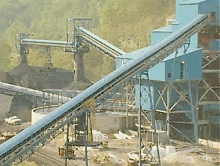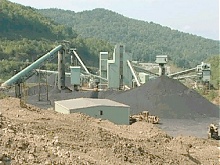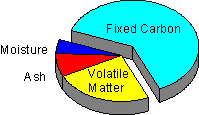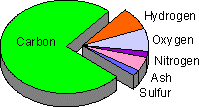| Improving the Properties of Mined Coal
Kentucky coal is improved by the partial removal of
the impurities—sulfur and ash. The cleaning process to remove impurities from the coal is often
called beneficiation, coal
preparation, or
coal washing.
In general, coal cleaning is accomplished by
separating and removing inorganic impurities from organic coal particles. The inorganic ash
impurities are predominantly more dense than the coal particles. This property is generally the
basis for separating the coal particles from the ash impurities.
Western Kentucky
had 13,090 tons per hour of
coal preparation design capacity at approximately 20 coal preparation plants during 2005.
Eastern Kentucky
had 46,495 tons per hour of coal preparation design capacity at approximately
67 coal preparation plants during 2005.
Each coal seam has a different washability
characteristic. The range of improvement to a particular seam by mechanical washing varies from
plant to plant and location to location.
In Western Kentucky, sulfur (inorganic sulfur) and
ash are the two main impurities removed. Considering the seven principal mined seams in this
area, 0.5% to 2.5% can be subtracted from the average sulfur content and 9% to 13% can be
subtracted from the ash content after the coal washing process.
In Eastern Kentucky, coals with very high ash
contents are washed. High ash content results from seam impurities, splits, or partings in the
seam. In these seams the ash is the main impurity removed—10% to 15% can be subtracted from the
ash content after the coal washing process and with only a slight reduction in the sulfur
content.
Source: Kentucky
Office of Energy Policy's Kentucky pre/rail directory.
|



